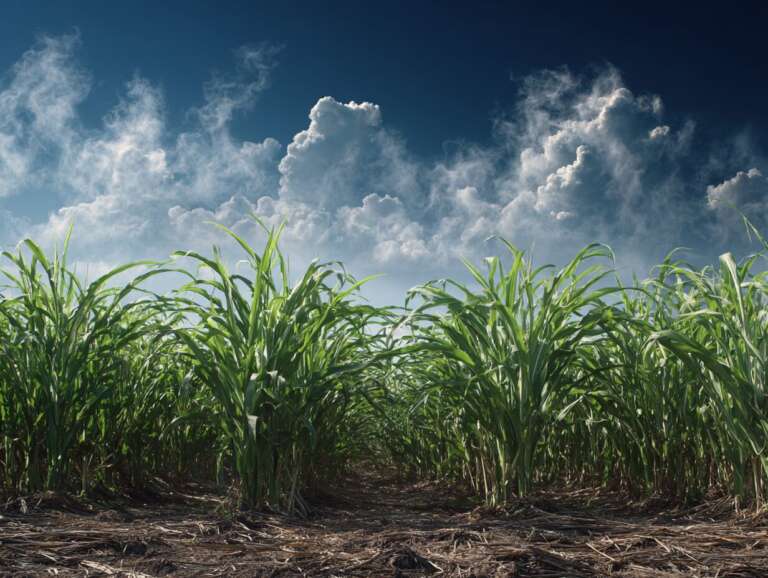Did you know that agriculture accounts for nearly 25% of global greenhouse gas emissions? That’s right—while we often point fingers at industries like transportation and energy, the truth is that our food systems are a massive contributor to climate change. The urgency to address this issue couldn’t be clearer. As the planet warms, the need for innovative solutions in agriculture becomes paramount. But here’s the silver lining: adopting sustainable farming practices not only helps reduce emissions but also promotes healthier ecosystems and vibrant communities. Let’s dive into the transformative techniques that can reshape our agricultural landscape and combat CO2 emissions.
TL;DR: Sustainable farming techniques can significantly cut CO2 emissions. Practices like cover cropping, reduced tillage, and agroforestry contribute to carbon sequestration. Implementing these techniques also enhances soil health and biodiversity.
Cover Cropping: A Shield for the Soil
Imagine a lush green blanket covering your fields, protecting the soil beneath. That’s the essence of cover cropping. These crops, planted during off-seasons, serve multiple purposes: they prevent soil erosion, suppress weeds, and most importantly, capture carbon from the atmosphere.
Cover crops like clover, rye, and vetch not only enhance soil health but also improve carbon capture rates. Research shows that farms utilizing cover crops can increase organic matter in the soil by up to 1.5 tons per acre annually. This means more nutrients for your crops and a significant reduction in CO2 emissions. In a world where sustainable farming is crucial, cover cropping stands out as a powerful tool for CO2 reduction.
Reduced Tillage: Less Disturbance, More Carbon
Here’s the brutal truth: conventional tillage is like a bad breakup for your soil. It disrupts the delicate ecosystem, releasing stored carbon and degrading soil structure. Enter reduced tillage—a game-changer in sustainable farming techniques. By minimizing soil disturbance, farmers can maintain soil organic matter, which is essential for carbon storage.
Studies reveal that farms practicing reduced tillage can cut CO2 emissions by 30% compared to their conventional counterparts. Imagine the impact if more farmers adopted this approach! Not only does reduced tillage enhance soil health, but it also leads to better water retention and crop yields. It’s a win-win for both the planet and the farmers.
Agroforestry: Trees for Tomorrow
What if I told you that planting trees could be one of the most effective strategies for CO2 reduction? Welcome to agroforestry, where trees and crops coexist in harmony. This innovative practice not only captures carbon but also enhances biodiversity and soil health.
Agroforestry systems, such as alley cropping and silvopasture, provide dual benefits. Trees act as carbon sinks, absorbing CO2 while providing shade and habitat for wildlife. Research indicates that agroforestry can sequester up to 30% more carbon than conventional farming methods. Imagine the potential if we integrated trees into our agricultural landscapes! The future of farming lies in this symbiotic relationship between crops and trees.
Crop Rotation: Diversifying for Success
Most people get this wrong: they think planting the same crop year after year is the best way to maximize yields. In reality, crop rotation is the secret weapon for sustainable farming. By diversifying crops, farmers can reduce pest pressures, enhance soil fertility, and ultimately lower CO2 emissions.
Take, for example, a simple rotation of corn and soybeans. This sequence not only breaks pest cycles but also improves soil health, reducing the need for chemical fertilizers. Data shows that effective crop rotation can lead to yield improvements of up to 20%. The implications are clear: embracing crop diversity is not just good for the environment; it’s a smart economic strategy for farmers.
Integrated Pest Management (IPM): Eco-Friendly Solutions
Here’s a shocking statistic: chemical pesticides can harm not only pests but also beneficial insects, soil health, and even human health. Enter Integrated Pest Management (IPM), a sustainable farming approach that prioritizes eco-friendly solutions.
IPM employs techniques like biological controls and monitoring to manage pests without relying heavily on chemicals. The result? A significant reduction in pesticide use—by as much as 50% in some cases—leading to lower CO2 emissions and healthier ecosystems. Imagine a world where farmers can protect their crops without harming the planet. That’s the promise of IPM.
Precision Agriculture: Technology Meets Sustainability
You won’t believe this, but technology can actually help us farm more sustainably. Precision agriculture uses cutting-edge tools like drones, sensors, and data analytics to optimize resource use. This means less waste, lower costs, and reduced CO2 emissions.
For instance, farms that implement precision agriculture techniques can cut fertilizer use by up to 30%. This not only lowers emissions but also enhances soil health and crop yields. Case studies show that farmers who embrace precision agriculture see a significant return on investment while contributing to a more sustainable future. The reality is that technology and sustainability can go hand in hand.
Conclusion
In summary, the sustainable farming techniques discussed—cover cropping, reduced tillage, agroforestry, crop rotation, integrated pest management, and precision agriculture—are not just buzzwords; they are essential strategies for reducing CO2 emissions and fostering healthier ecosystems.
Now, here’s your actionable takeaway: explore these practices and consider how you can implement them in your own farming or gardening efforts. Whether you’re a seasoned farmer or a backyard gardener, every little bit counts. Share your experiences with sustainable farming practices or ask questions in the comments section below. Together, we can cultivate a greener, more sustainable future.

